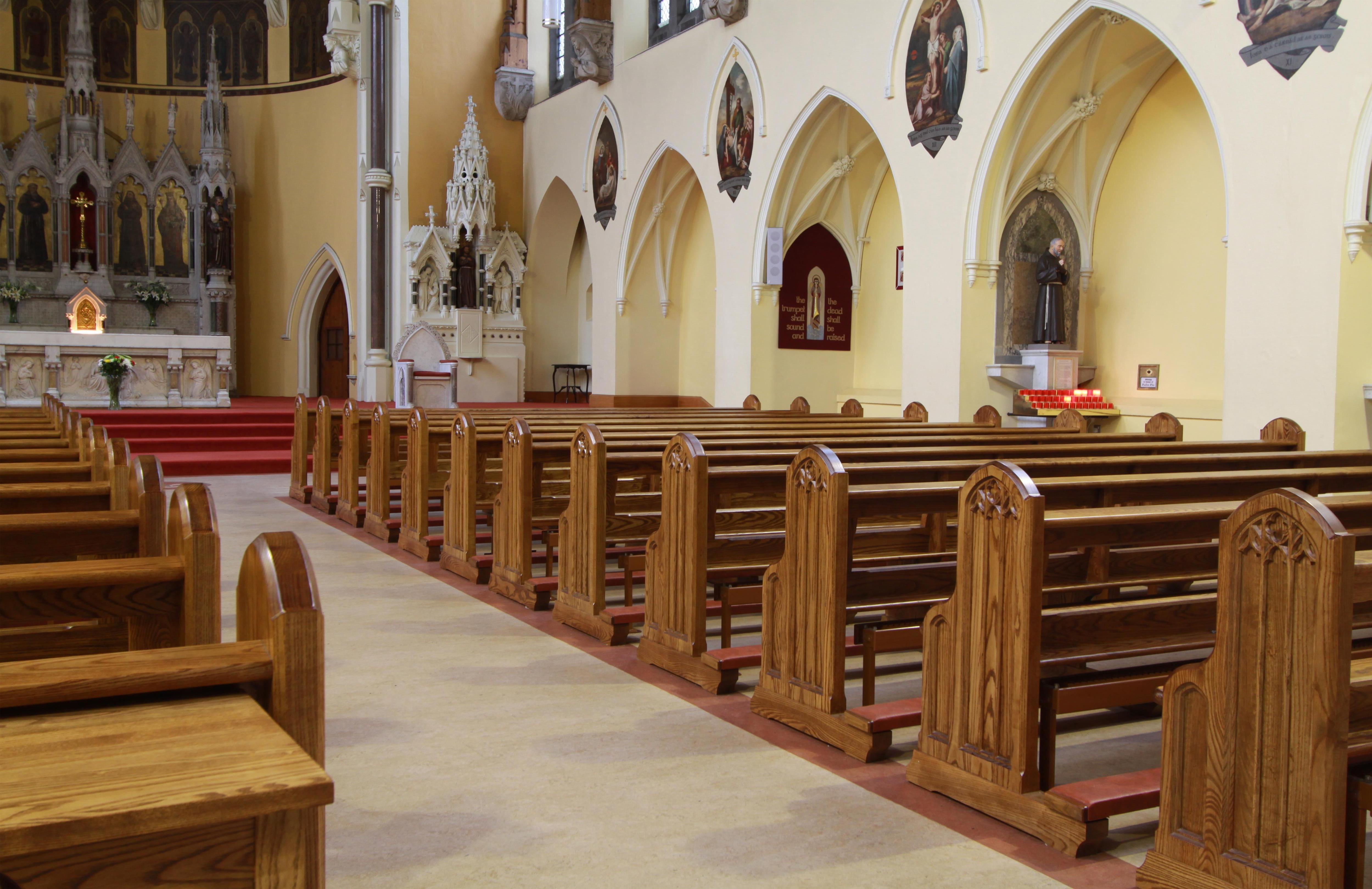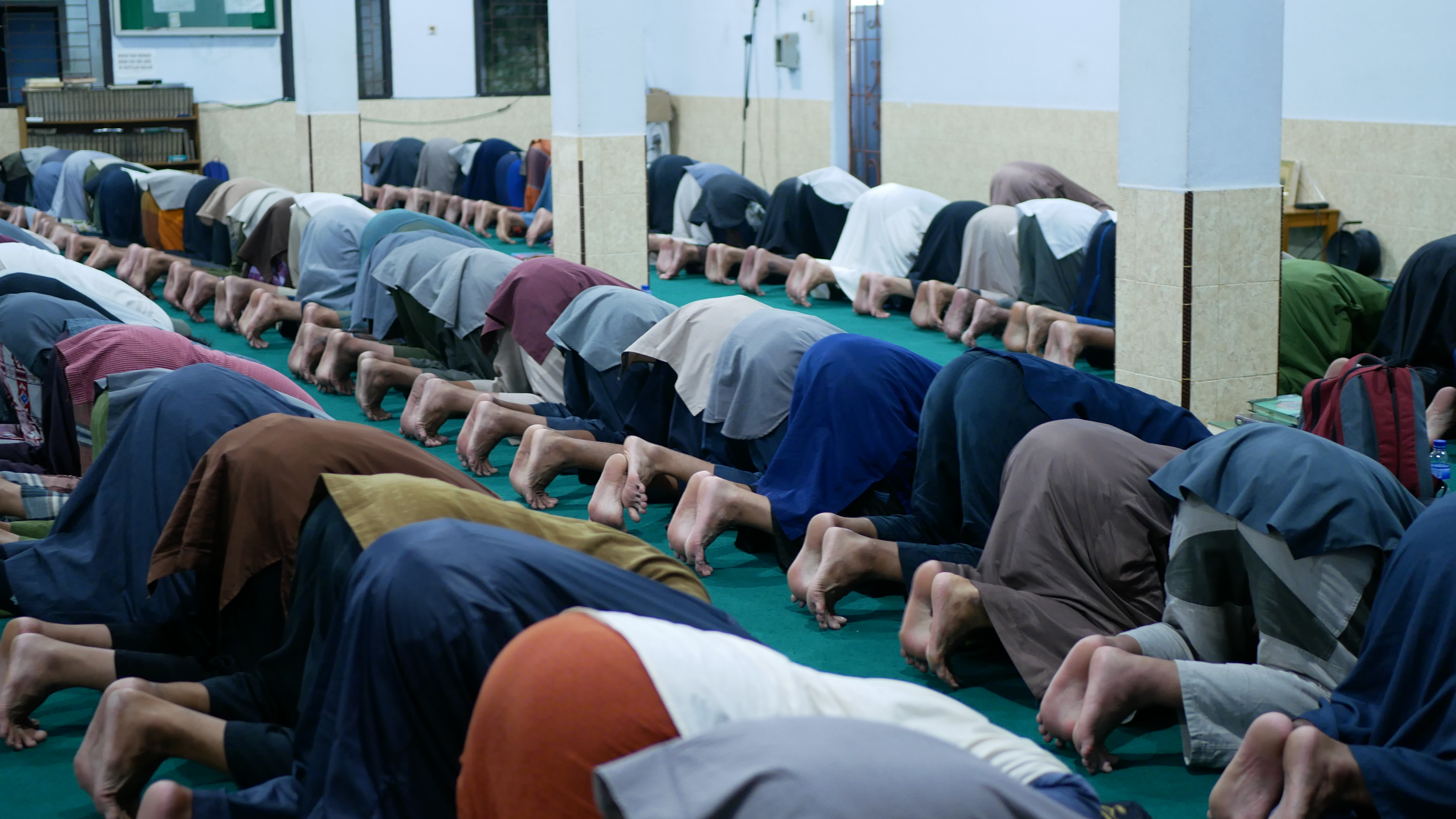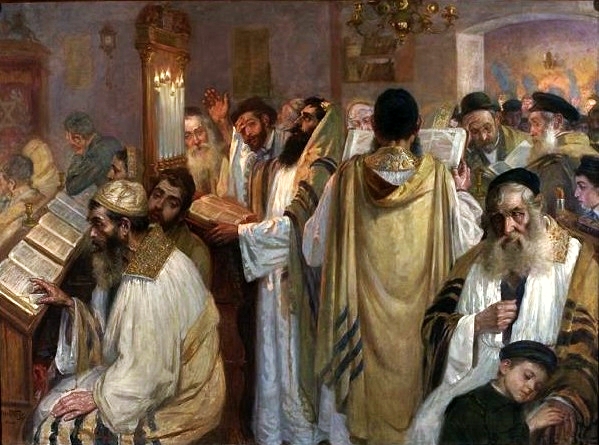|
Kneeling
Kneeling is a basic human position where one or both knees touch the ground. According to Merriam-Webster, kneeling is defined as "to position the body so that one or both knees rest on the floor". Kneeling with only one knee, and not both, is called genuflection. Kneeling is a primate behavior used to convey deference by making the figure that is kneeling appear smaller than the other. Primates themselves establish a dominance hierarchy (or "pecking order") which is important to the survival and behavior of the group. Chimpanzees, for example, have a complex social group that involves a dominant male and a corresponding female, to whom the other males and the Juvenile (organism), juvenile chimps are submissive. Males who threaten the hierarchy are often severely injured or killed; in some instances, the use of submissive behavior is necessary to ensure survival. Religion Humans have inherited the custom of submissive behavior, and kneeling has become prevalent in religious pra ... [...More Info...] [...Related Items...] OR: [Wikipedia] [Google] [Baidu] |
Human Position
Human positions refer to the different physical configurations that the human body can take. There are several synonyms that refer to human positioning, often used interchangeably, but having specific nuances of meaning. *''Position'' is a general term for a configuration of the human body. *''Posture'' means an intentionally or habitually assumed position. *''Pose'' implies an artistic, aesthetic, athletic, or spiritual intention of the position. *''Attitude'' refers to postures assumed for purpose of imitation, intentional or not, as well as in some standard collocations in reference to some distinguished types of posture: " Freud never assumed a fencer's attitude, yet almost all took him for a swordsman." *''Bearing'' refers to the manner of the posture, as well as of gestures and other aspects of the conduct taking place. Basic positions While not moving, a human is usually in one of the following basic positions: All-fours This is the static form of crawling which is a ... [...More Info...] [...Related Items...] OR: [Wikipedia] [Google] [Baidu] |
Prayer Rug
A prayer rug or prayer mat is a piece of fabric, sometimes a pile carpet, used by Muslims, some Christians, especially in Orthodox Christianity and some followers of the Baháʼí Faith during prayer. In Islam, a prayer mat is placed between the ground and the worshipper for cleanliness during the various positions of Islamic prayer. These involve prostration and sitting on the ground. A Muslim must perform (ablution) before prayer, and must pray in a clean place. Prayer rugs are also used by some Oriental Orthodox Christians for Christian prayer involving prostrations in the name of the Trinity, as well as during the recitation of the Alleluia and Kyrie eleison. Its purpose is to maintain a cleanly space to pray to God and shoes must be removed when using the prayer rug. Among Russian Orthodox Christians, particularly Old Ritualists, a special prayer rug known as the Podruchnik is used to keep one's face and hands clean during prostrations, as these parts of the body ... [...More Info...] [...Related Items...] OR: [Wikipedia] [Google] [Baidu] |
Kneeler
A kneeler is a cushion (also called a tuffet, hassock, genuflexorium, or genuflectorium) or a piece of furniture used for resting in a kneeling position during Christian prayer. In many churches, pews are equipped with kneelers in front of the seating bench so members of the congregation can kneel on them instead of the floor. In a few other situations, such as confessionals and areas in front of an altar, kneelers for kneeling during prayer or sacrament A sacrament is a Christian rite which is recognized as being particularly important and significant. There are various views on the existence, number and meaning of such rites. Many Christians consider the sacraments to be a visible symbol ...s may also be used. Traditionally, altar rails often have built-in knee cushions to facilitate reception of Holy Communion while kneeling. A kneeler is also a part of the prie-dieu prayer desk. Kneelers in churches are a modern development. Kneeling was not part of th ... [...More Info...] [...Related Items...] OR: [Wikipedia] [Google] [Baidu] |
Genuflection
Genuflection or genuflexion is the act of bending a knee to the ground, as distinguished from kneeling which more strictly involves both knees. From early times, it has been a gesture of deep respect for a superior. Today, the gesture is common in the Christian religious practices of the Anglicanism, Lutheranism, the Catholic Church, and Western Rite Orthodoxy. The Latin word , from which the English word is derived, originally meant kneeling with both knees rather than the rapid dropping to one knee and immediately rising that became customary in Western Europe in the Middle Ages. It is often referred to as "going down on one knee" or "bowing the knee". In Western culture: * one genuflects on the left knee to a human dignitary, whether ecclesiastical or civil; * in Christian churches and chapels, one genuflects on the right knee when the Eucharist, Sacrament is not exposed but in a church tabernacle, tabernacle or veiled. Conversely, one kneels with both knees if the Sacrament i ... [...More Info...] [...Related Items...] OR: [Wikipedia] [Google] [Baidu] |
Knee
In humans and other primates, the knee joins the thigh with the leg and consists of two joints: one between the femur and tibia (tibiofemoral joint), and one between the femur and patella (patellofemoral joint). It is the largest joint in the human body. The knee is a modified hinge joint, which permits flexion and extension (kinesiology), extension as well as slight internal and external rotation. The knee is vulnerable to injury and to the development of osteoarthritis. It is often termed a ''compound joint'' having tibiofemoral and patellofemoral components. (The fibular collateral ligament is often considered with tibiofemoral components.) Structure The knee is a modified hinge joint, a type of synovial joint, which is composed of three functional compartments: the patellofemoral articulation, consisting of the patella, or "kneecap", and the patellar groove on the front of the femur through which it slides; and the medial and lateral tibiofemoral articulations linking the ... [...More Info...] [...Related Items...] OR: [Wikipedia] [Google] [Baidu] |
Sujud
Sujūd (, ), or sajdah (, ), also known as sijda, sejda or shejda, in Islam is the act of low bowing or prostration to God facing the ''qiblah'' (direction of the Kaaba at Mecca). It is usually done in standardized prayers (salah). The position involves kneeling and bowing till one touches the ground with seven bones (points): the forehead and nose, two hands, two knees and two sets of toes. In accordance with the Sunnah (the Way) of Muhammad, one's elbows should be far from one's body, unless it causes discomfort to other worshippers, but not resting on the ground. Some scholars hold the position that this applies only to men, and that women are encouraged to tuck their elbows in out of modesty. Overview Sujud (prostration) is one of the main pillars of daily prayer (salah) in Islam. A single act of sujud is called a sajdah (plural ''sajdāt''). Muslims do sujud several times in each prayer, depending on the number of '' raka'at'' of prayer: two sajadat are performed every r ... [...More Info...] [...Related Items...] OR: [Wikipedia] [Google] [Baidu] |
Prostration
Prostration is the gesture of placing one's body in a reverentially or submissively prone position. Typically prostration is distinguished from the lesser acts of bowing or kneeling by involving a part of the body above the knee, especially the hands, touching the ground. Major world religions employ prostration as an act of submissiveness or worship to an entity or to the God, Supreme Being (i.e. God), as in the ''Metanoia (theology), metanoia'' in Christian prayer used in the Eastern Orthodox and Oriental Orthodox Churches, and in the ''sujud'' of the Islamic prayer, ''salat''. In various cultures and traditions, prostrations are similarly used to show respect to rulers, civil authorities and social elders or superiors, as in the Culture of China, Chinese kowtow or Ancient Greek ''proskynesis''. The act has often traditionally been an important part of religious, civil and traditional rituals and ceremonies, and remains in use in many cultures. Traditional religious practi ... [...More Info...] [...Related Items...] OR: [Wikipedia] [Google] [Baidu] |
Forehead
In human anatomy, the forehead is an area of the head bounded by three features, two of the skull and one of the scalp. The top of the forehead is marked by the hairline, the edge of the area where hair on the scalp grows. The bottom of the forehead is marked by the supraorbital ridge, the bone feature of the skull above the eyes. The two sides of the forehead are marked by the temporal ridge, a bone feature that links the supraorbital ridge to the coronal suture line and beyond. However, the eyebrows do not form part of the forehead. In '' Terminologia Anatomica'', ''sinciput'' is given as the Latin equivalent to "forehead" (etymology of ''sinciput'': from ''semi-'' "half" and ''caput'' "head".). Structure The bone of the forehead is the squamous part of the frontal bone. The overlying muscles are the occipitofrontalis, procerus, and corrugator supercilii muscles, all of which are controlled by the temporal branch of the facial nerve. The sensory nerves of the forehea ... [...More Info...] [...Related Items...] OR: [Wikipedia] [Google] [Baidu] |
Yom Kippur
Yom Kippur ( ; , ) is the holiest day of the year in Judaism. It occurs annually on the 10th of Tishrei, corresponding to a date in late September or early October. For traditional Jewish people, it is primarily centered on atonement and repentance. The day's main observances consist of full fasting and asceticism, both accompanied by extended prayer services (usually at synagogue) and sin confessions. Some minor Jewish denominations, such as Reconstructionist Judaism, focus less on sins and more on one's goals and accomplishments and setting yearly intentions. Alongside the related holiday of Rosh Hashanah, Yom Kippur is one of the two components of the High Holy Days of Judaism. It is also the last of the Ten Days of Repentance. Name The formal Hebrew name of the holiday is , 'day fthe atonements'. This name is used in the Bible, Mishnah, and Shulchan Aruch. The word 'atonement' is one of many Biblical Hebrew words which, while using a grammatical plural form, ... [...More Info...] [...Related Items...] OR: [Wikipedia] [Google] [Baidu] |
Unknown Painter - Christ On The Cross With Mary As Intercessor And A Donor - WGA23563
Unknown or The Unknown may refer to: Film and television Film * ''The Unknown'' (1915 comedy film), Australian silent film * ''The Unknown'' (1915 drama film), American silent drama film * ''The Unknown'' (1927 film), a silent horror film starring Lon Chaney * ''The Unknown'' (1936 film), a German drama film * ''The Unknown'' (1946 film), a mystery film * ''The Unknown'' (1964 film), a Polish war film * '' Anjaane: The Unknown'', a 2005 Bollywood horror movie * ''The Unknown'', a 2005 action/thriller starring Miles O'Keeffe * ''Unknown'' (2006 film), a thriller starring James Caviezel * ''Unknown'' (2011 film), a thriller starring Liam Neeson * ''Unknowns'' (''Desconocidas''), a 2022 film by Venezuelan director Luis Fernández TV * '' Het Onbekende'' (Dutch for: ''The Unknown''), Dutch television show * ''Unknown'', a 2024 web series starring Chris Chiu * "The Unknown" (''Star Wars: The Clone Wars''), a 2014 episode of the TV series Literature * ''Unknown'' (magazine) ... [...More Info...] [...Related Items...] OR: [Wikipedia] [Google] [Baidu] |






